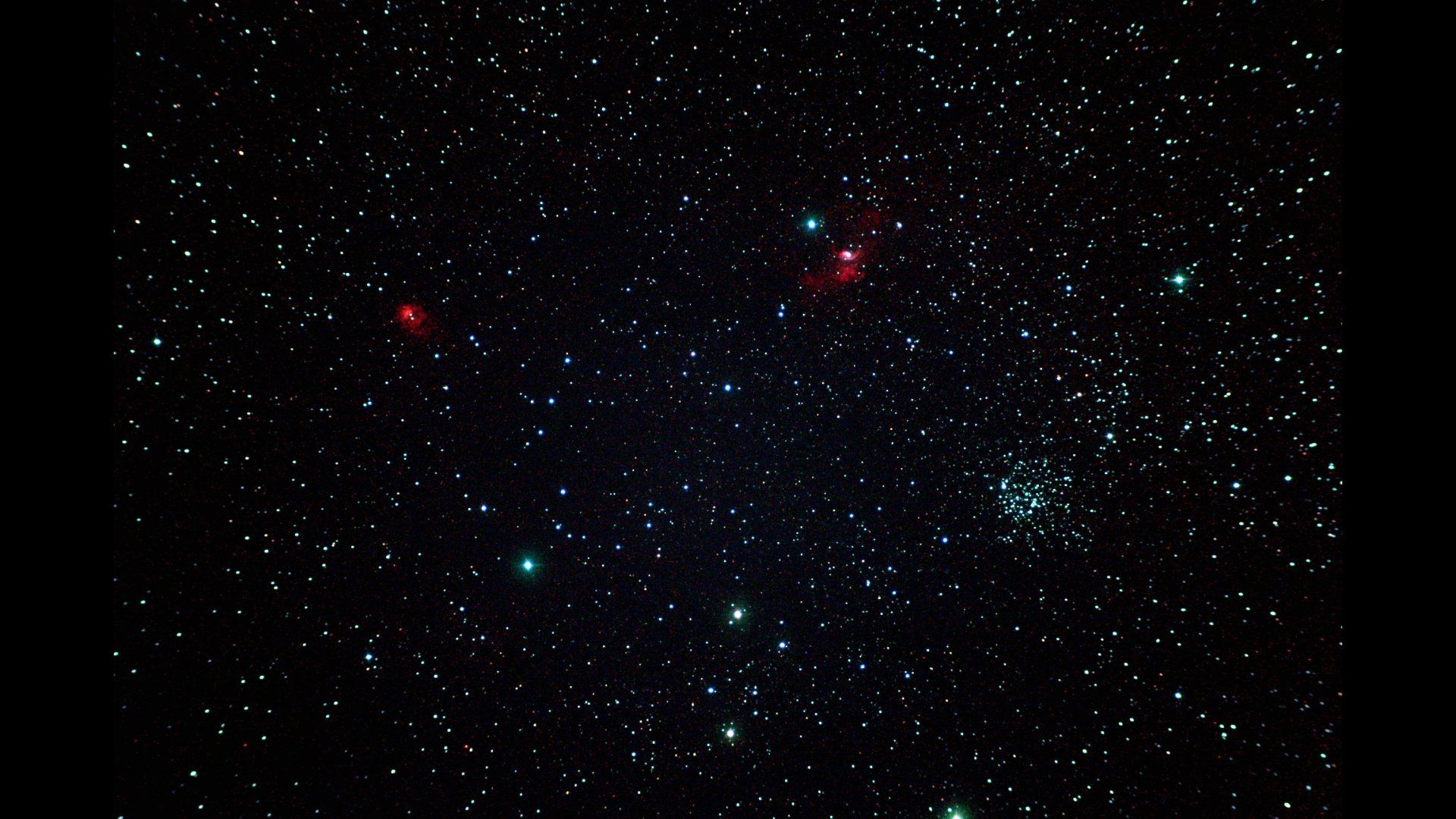M52
Messier 52 or M52, also known as NGC 7654, is an open cluster of stars in the northern constellation of Cassiopeia. It was discovered by Charles Messier on September 7, 1774. M52 can be seen from Earth with binoculars. The brightness of the cluster is influenced by extinction, which is stronger in the southern half.
R. J. Trumpler classified the cluster appearance as II2r, indicating a rich cluster with little central concentration and a medium range in the brightness of the stars. This was later revised to I2r, denoting a dense core. The cluster has a core radius of 2.97 ± 0.46 ly (0.91 ± 0.14 pc) and a tidal radius of 42.7 ± 7.2 ly (13.1 ± 2.2 pc). It has an estimated age of 158.5 million years and a mass of 1,200 M☉.
The magnitude 8.3 supergiant star BD +60°2532 is a probable member of M52. The stellar population includes 18 candidate slowly pulsating B stars, one of which is a δ Scuti variable, and three candidate γ Dor variables. There may also be three Be stars. The core of the cluster shows a lack of interstellar matter, which may be the result of supernovae explosions early in the cluster's history.


